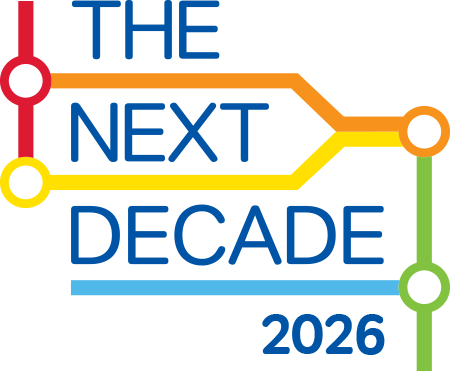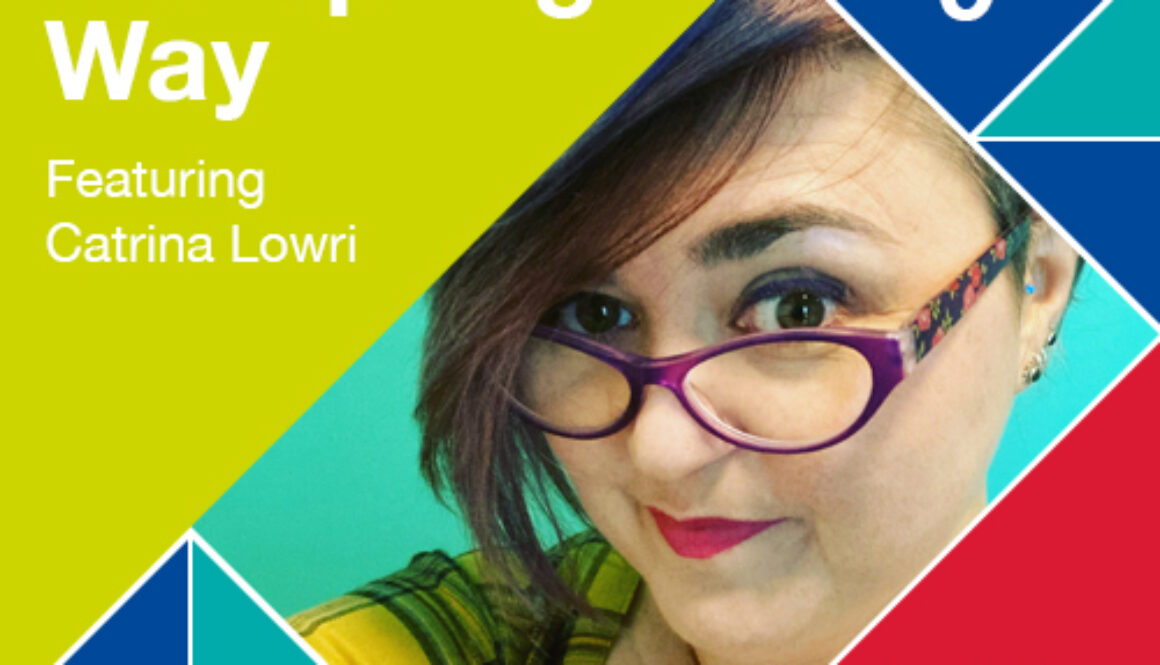
Elizabeth Hudson
Posts by Elizabeth Hudson:

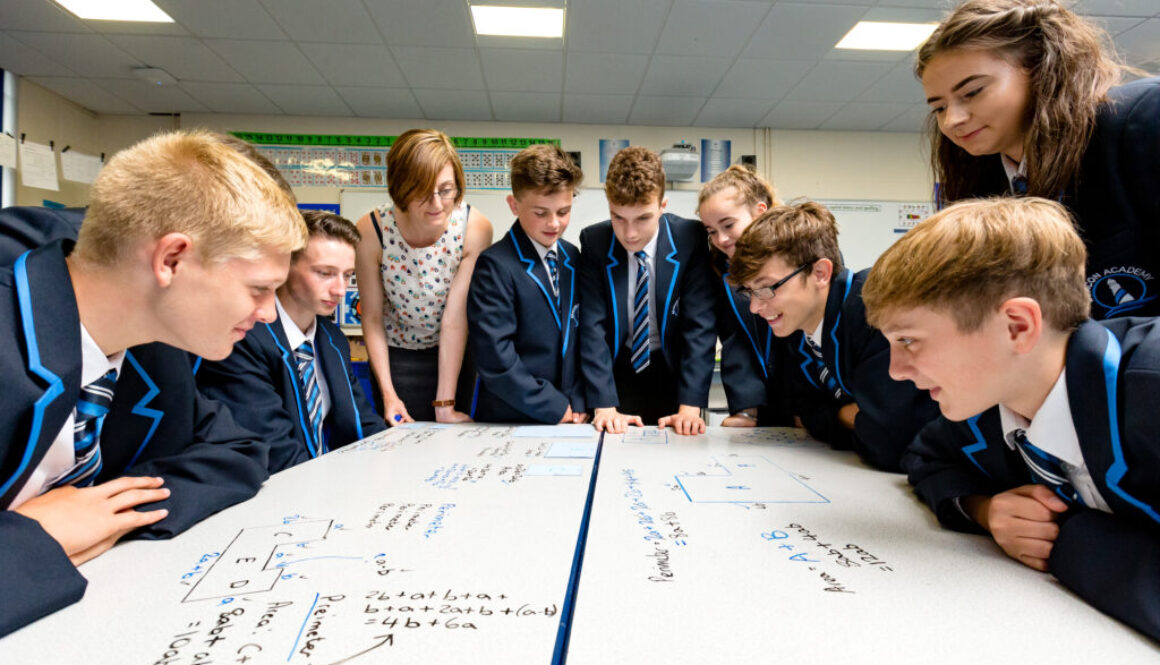
Getting transition right for SEN learners
By Rob Burnett
Moving between primary and secondary (or any type of transition between schools) is an incredibly daunting experience for any learner. When you add to that experience additional needs, it can very quickly become a potential minefield of problems for some students.
Supporting students through this process can be extremely difficult. Often little is known about either where they are going, or where they have come from. Matching up support can be complicated if similar options aren’t available and relationships are yet to be built with the new setting. On top of all that, the support that has enveloped a student from reception to year 6 disappears overnight when they leave primary in year 6 and they fundamentally ‘start from scratch’ in year 7. Getting transition right for all learners is important, but getting it right for students with additional needs is absolutely vital. It can quite simply be the difference between positive and negative outcomes in life.
From my experience of working across key stages I have found that the most successful transitions start early. For some, this is as far back as the middle of KS2 (especially for those with Education, Health & Care Plans). Meetings with parents and the student themselves should serve as a key starter to kicking-off the transition process. As with all students with additional needs, placing them in the middle of the situation then building provision around them is often the best way of dealing with the situation. The future setting needs to quickly build a picture of ‘what already works’, and then integrate that within their own practice and their own offer.
To aid this, key relationships need to be built between settings who regularly transfer pupils (this could be KS2-KS3 or KS4 into further education or even a PRU into mainstream). Knowing what a student has experienced previously and piecing together how and if that support can continue is really important to the successful transfer of all students. Furthermore, this can help the extended transition program as schools can have more informal aspects to a transition process in visits, meetings or even holding intervention sessions in the new setting. As these relationships grow it can support students and their families having more information about potential school choices and ensuring they are in the right place.
Ultimately, there isn’t a ‘fix all’ for nailing the transition process and it takes a great deal of careful planning twinned with a huge amount of flexibility to ensure that the transfer of a student is ultimately successful. Ensuring that the needs of the student are at the heart of every decision made around their transition is always something that should be taking place. Puzzling together the jigsaw of support will then inevitably, almost naturally, occur.
I will be speaking in more depth about this and how Beacon Academy have worked to ensure this process is something that has been successful in my JosieTV session on 12th January.
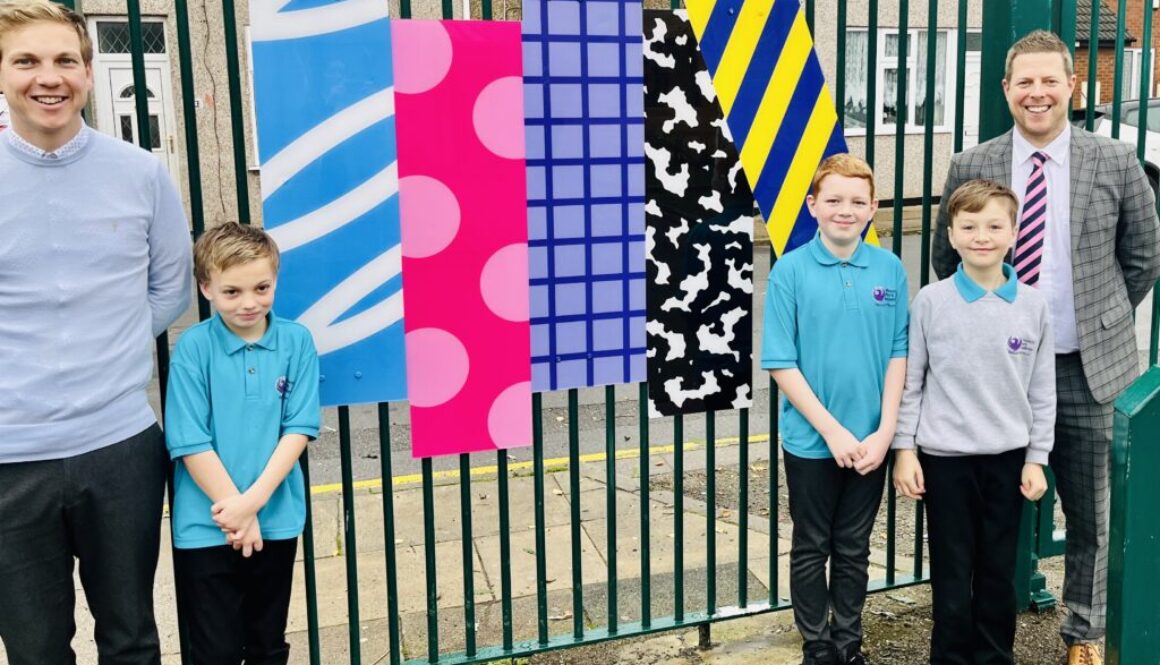
Communicolour Art Installation Inspires Grimsby Pupils
School’s getting a whole lot brighter for pupils in Grimsby thanks to Communicolour, an innovative new project that brings together schools and leading artists.
Phoenix Park Academy is the latest school to benefit from an inspiring, bold Communicolour art installation. Designed by acclaimed Sheffield-based artist Marcus Method, a sculpture series is transforming the outdoor space at Phoenix Park with vibrant colour and pattern.
Communicolour is a groundbreaking new initiative from Wellspring Academy Trust and aims to create a world less grey for pupils and communities by converting forgotten grey spaces into riots of colour and contemporary design. Playgrounds, fences, sides of buildings and more in schools across Yorkshire and Lincolnshire have been reimagined as canvases and now display striking and engaging art.
Mark Wilson, Chief Executive at Wellspring Academy Trust, explains: “Education is really about igniting the imaginations of children and young people. Our sense of space and the calibre of our surroundings plays a critical role in that. Through our Communicolour work, we are creating spaces that are inspiring and engaging, and introduce our pupils to the incredible benefits art can have on our wellbeing.
“We want our young people to be inspired by our Communicolour art projects and, crucially, to take away the confidence that they can make a positive contribution in the world. We want them to understand they can express themselves through creativity. We want them to see value in experimentation and play, to see the world as vibrant and joyful. We want our young people to enjoy their experience of school in every form.’’
Marcus Method, artist behind the design at Phoenix Park, added: “Using my designs to inspire and engage young people and introduce them to the benefits of art has been a real pleasure. The sculptures have been designed around the concept of ‘Flourishing,’ and represent change and growth. The first sculpture is very regimented and uniform, but as each one progresses, more shape, colour and dynamism is added. This journey represents the life of the young people in school – maybe unsure and shy at the start but flourishing over time through meeting new people and experiencing new things, and enriching their lives.”
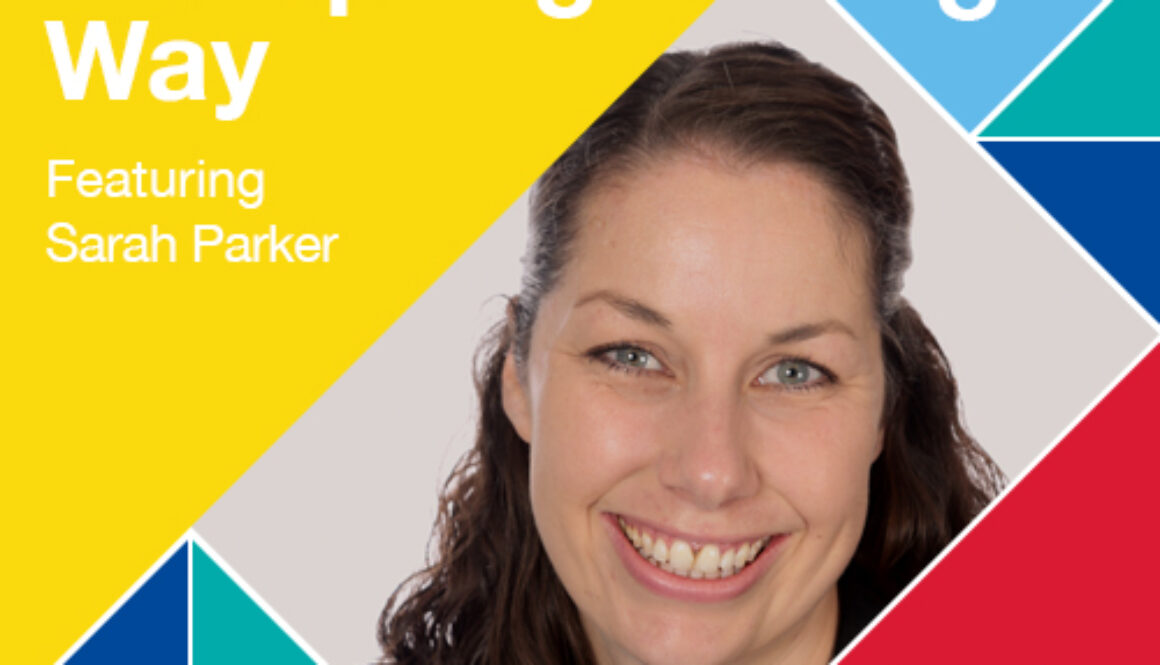
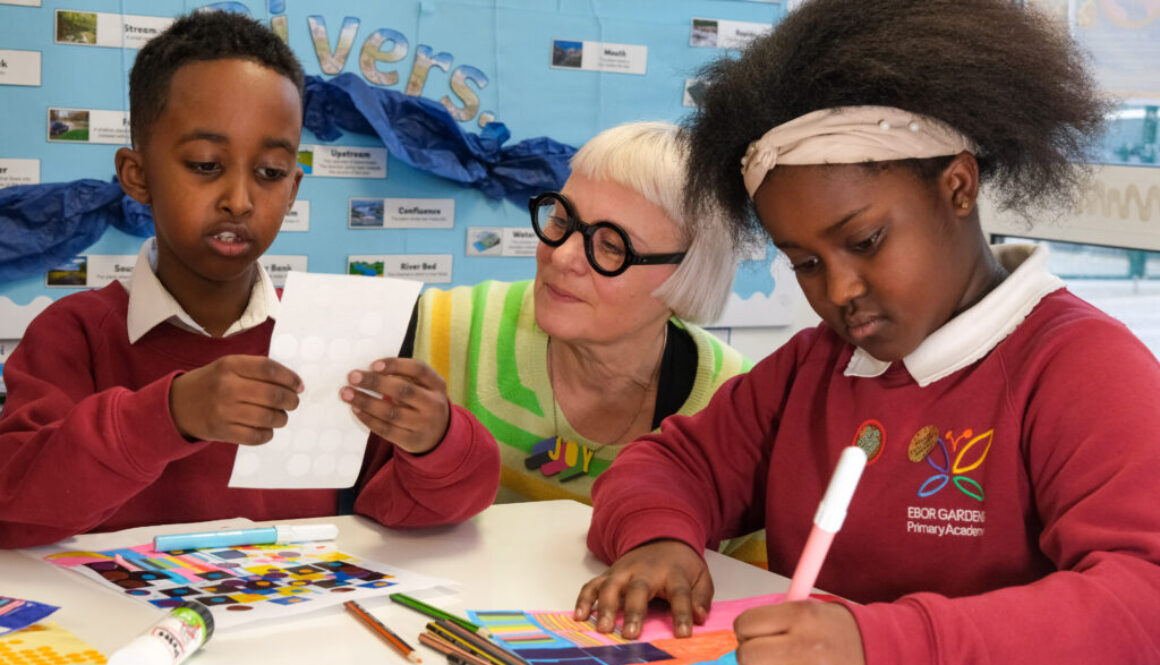
International Artist Gets Creative With Leeds School Children
A world-renowned artist who recently designed an aerial installation of 105 flags spanning the entire length of London’s Oxford Street to bring awareness to environmental issues is now working with pupils from a Leeds inner city primary school to create their very own art project.
Based in London, Morag Myerscough is an international artist and designer famous for her bold, colourful community-based installations. Her award-winning work is regularly featured on TV and one of her most recent projects is the Joy Garden at Sheffield Children’s Hospital. Next on the list is an exciting new installation for Ebor Gardens Primary School after Morag hosted a day of workshops there with Year 4 pupils. Morag will now design an exciting new installation for the Burmantofts school incorporating the ideas the children developed and shared in the workshops.
This work is the latest development in the Communicolour project, an initiative from Wellspring Academy Trust that transforms forgotten grey spaces in schools and communities into amazing, inspiring art. Under the scheme, leading artists are invited to treat Wellspring schools’ playgrounds, school buildings, walls and fences as blank canvases to explore and reimagine. Pupils, staff and members of the wider school community then benefit from both inspiring, engaging space and everyday access to exciting, world-class art.
Natalie Wathen, Executive Vice Principal at Ebor Gardens, explained: “This is an incredible opportunity for the children at Ebor Gardens to meet and be inspired by a famous, critically acclaimed artist. We’ve been learning all about Morag’s work in the run up to the workshops and the children were very excited and eager to share their thoughts and ideas with Morag.
“Our school community is a diverse one, with pupils from a range of cultures and backgrounds. Working together with Morag to create a large-scale art installation that celebrates our shared experiences and community will be a wonderful thing, not just for pupils but for everyone involved in Ebor Gardens. We can’t wait to see what Morag and the children come up with!”
Morag Myerscough, whose mantra is “make happy those that are near and those that are far will come,” added: “Community and a sense of place are universally important. We all want to feel like we belong, and my work uses design to convey a community’s unique identity and develop that feeling of belonging.
“I’ve thoroughly enjoyed spending time with the young people at Ebor Gardens and working with them to understand what makes their corner of Leeds so special to them and discovering how we can represent and share that through the wonder that is shape and colour. There’s nothing quite like the creativity and enthusiasm of children to inspire and I’ve no doubt we’ll come up with something spectacular together.”
Ebor Gardens is part of Wellspring Academy Trust, a multi-academy trust with 28 schools across Yorkshire and Lincolnshire spanning mainstream primary and secondary, SEND and alternative provision settings. Communicolour has already transformed eight schools in the Trust, including Victoria Primary Academy in Leeds and Green Meadows in Guiseley, and has 12 more projects in planning stages.
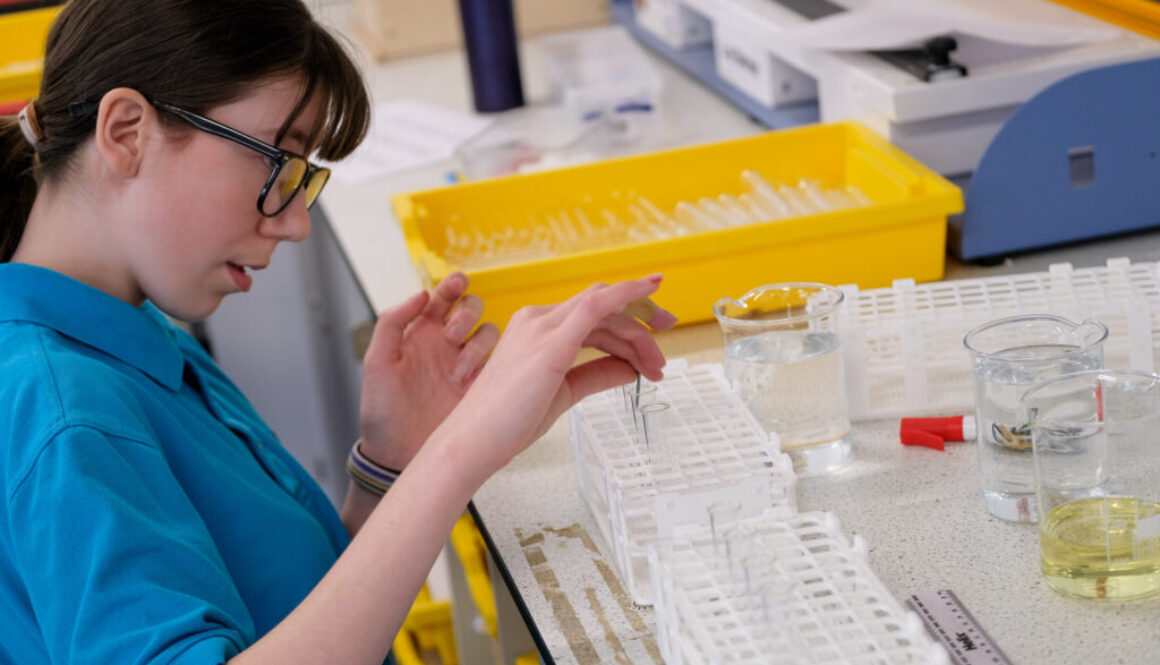
Knowledge Jigsaw: Get better at science
By Dr Waheed Khan
Ofsted published a report on its research review on 29 April 2021 that identified factors that influence the quality of science education in schools in England. The review was of existing research and brought together what is already known into a single document. It explored different types of scientific knowledge, how to decide and prioritise curriculum content and how teachers can assess children’s progress which can be referred to when reviewing science in our own schools. This first part of this blog explores how to decide and prioritise curriculum content.
Expertise in science requires children to build at least two forms of knowledge. The first is the knowledge produced by science called ‘substantive’ knowledge, which includes models, laws and theories. The second is ‘how knowledge in science is produced, developed and accepted which is called ‘disciplinary knowledge’. This teaches children how scientific knowledge becomes established and gets revised. Importantly, it also involves children learning about the many different types of scientific enquiry.
There has been a great deal of emphasis given to schools having knowledge-rich curricula, however this report makes it clear that, in science, this does not mean children learning more ‘substantive’ knowledge, or scientific facts. It is more about developing children as scientists and how to work like a scientist. This involves teaching the working scientifically skills, or ‘disciplinary’ knowledge. The skills that scientists use when carrying out scientific enquiry are set out in the working scientifically statements in the National Curriculum.
However, there is more to developing ‘disciplinary’ knowledge than children simply practicing the working scientifically skills. While carrying out their scientific enquiries, children should be recognising that the working scientifically skills help them acquire new knowledge or adapt their thinking. This knowledge needs to be made explicit. It is not just about doing the activity. Quality time must be given for children to reflect on the evidence they gather to answer their scientific enquiry questions and use it to develop their ‘substantive’ knowledge. The bigger picture should show children that it’s this process that has produced the ‘substantive’ knowledge across biology, chemistry and physics.
In high-quality science curriculums, the jigsaw of knowledge should be carefully sequenced to reveal the interplay between substantive and disciplinary knowledge and foresee potential misconceptions. This ensures that children not only know ‘the science’ but also know the evidence for it and can use this knowledge to work scientifically. Children need the disciplinary knowledge, (working scientifically skills) to carry out a scientific enquiry, but may also need substantive knowledge. For example, in Key Stage 1, in order to successfully complete a scientific enquiry to identify the best material to use to make an umbrella, children will need an understanding of water proofing. In Key Stage 3, children will not be able to make a scientific prediction about the ascent of a rocket, if they do not have the substantive knowledge about the forces of friction (air resistance) and thrust.

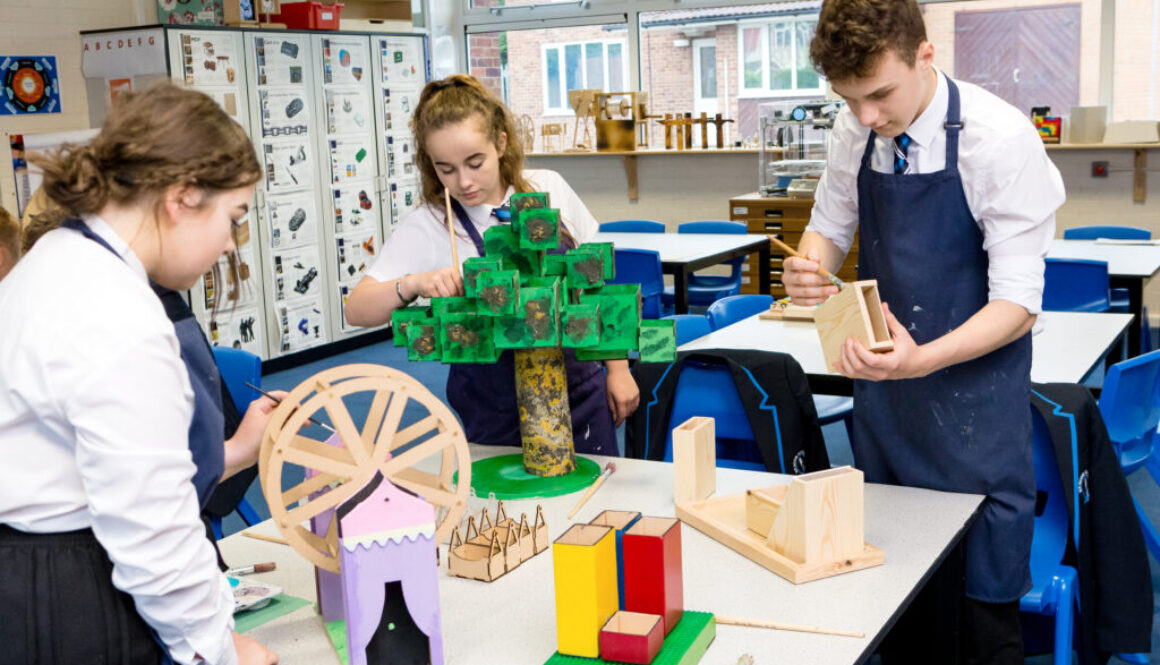
Art & Design and Design & Technology must remain separate
By Joanna Kempston
Despite having ‘design’ in common, A&D and D&T are very different, and it is essential that we maintain the distinction in schools.
Effective design education in schools depends upon teaching it in both design and technology (D&T) and art and design (A&D).
However, the starting points, emphasis, intentions and outcomes of students’ learning vary between the two, and clarifying the differences is significant in securing the integrity of each subject’s contribution. Together, they ensure students receive a broad experience of design, preparing them for later life and for some, a basis for work within the full spectrum of design-related industries.
Since its inception 30 years ago, the National Curriculum for England has contained the word ‘design’ in the titles of two of its subjects: D&T and A&D. It might be reasonable to therefore assume that the concept of design and its intrinsic importance in a broad and balanced education would be widely understood. I do not believe this is the case.
Differences of the two discrete disciplines
Design education is conceptualised as a continuum of experience, with A&D at one end and D&T at the other. There are a few imperatives for the teaching of design in both subjects, and others which belong at polar ends of the continuum.
Designing in D&T requires a wide range of interrelated decisions to be made including: the overall purposes of the product; the way it will work; technical matters; sensory appeal; aesthetics; and manufacturing and constructional constraints. All these must be considered in the light of meeting user requirements, in ways that will meet the needs of its specification. Every D&T project and unit of work should have design at its centre. Every task will be informed either directly by students’ iteratively designing – for example, developing and communicating innovative ideas for a product through computer-aided design, or indirectly – for example, developing knowledge about existing products to inform design decisions. Tasks which might be considered to be pure ‘making’ activities have a key role in informing students’ design thinking.
A&D does not require art, craft or design or to be taught simultaneously, and will not always include design as an integral part. Art and design, together with craft skills, can be treated as individual disciplines, or as blended learning activities reflecting real world experiences. Designing in A&D is predominantly concerned with critical understanding of the construction, meaning and significance of images and objects.
Design is strategic, supporting thinking, reasoning and analysis. Design is positioned, where and when appropriate, as a creative tool or strategy. Within A&D, design can provide strategic development – the ‘glue’ that links meaning, expression and creativity into the process.
In D&T, designing should always lead to products, systems and services that work in some way. Although aesthetic qualities are crucial to the success of almost all products, the outcomes of design cannot be considered to be design and technological if they are purely aesthetic by nature. Technical decisions should always feature in designing in D&T. For a product or service to be regarded as successful, it must work technically to perform its function and aesthetically to provide user appeal.
In A&D, an outcome can communicate on many levels, with function differing from that in D&T. A painting, site specific sculpture or photograph does have a function. For example, a painting is designed to engage and provide interest through the organisation of form and meaning.
However, designing in this sense does not need to lead to any practical outcome. It can be non-functional but is always meaningful. In A&D, meaning and form may or may not be more important than function and communication of meaning is not reliant on function. Both disciplines produce outcomes that are intended for a specific user or audience.
In D&T, students’ designing is always user-centred e.g. there is always a consumer, client or market in mind. A design brief in D&T leads to a dialogue between the designer and the intended user, enabling them to choose between multifarious technical possibilities and identify appropriate technology working towards a creative outcome meeting their needs.
Learning should always emphasise the utility and outward value of what is being designed. But in A&D, students may engage in creative activity for an audience, an exhibition, or installation as an end point. The creative activity may be an expressive or meaningful end in itself, supporting the creative practice of the student. Starting points can be self-motivated, or as a response to a commission or a brief. In A&D, students’ learning may focus solely on the intrinsic, creative or cultural value of the outcome or process or, within the context of a craft work or piece of graphics, possess extrinsic or practical value.
Design can be reflective, meaningful, creative, challenging and expressive, resulting in activity that may or may not result in a functional or audience-led product, system, object or artefact. In an authentic D&T experience, students should always design tangible, functional, user-centred products and services i.e. not ornaments, sculptures, or representations of feelings. Some contexts in D&T will be immediately authentic to students and fall within their everyday experiences as users and consumers of products and services. Some authentic contexts will relate to the wider world and have cultural, social or industrial significance. Within A&D, authenticity for students is defined by a critical, expressive and meaningful understanding of the significance of the visual and material world. This will include signs, artefacts and symbols from their own and other cultures; paintings, drawings, sculptures, the grammar and tradition of ornament and decoration. It also includes products and artefacts that enrich and make our lives more meaningful.
5 ways to keep design disciplines discrete
• A&D and D&T teachers should engage in informed discussion about the nature of design in respective subjects
• Explore the differences in starting points for A&D and D&T
• Look for opportunities to effect efficiencies in teaching and learning across both subjects
• Identify commonalities and differences in approaches to developing innovation
• Actively engage members of the school SLT with the debate


